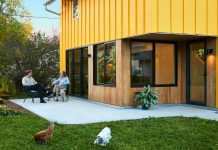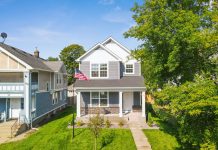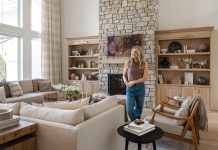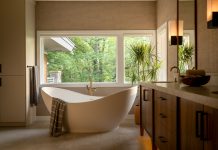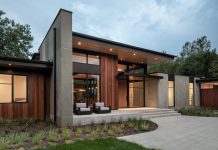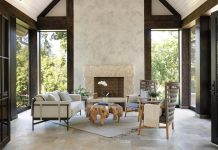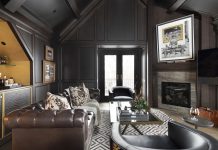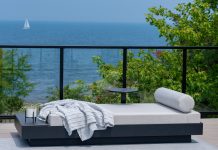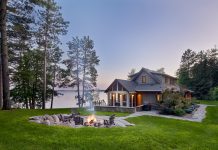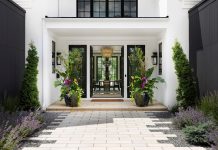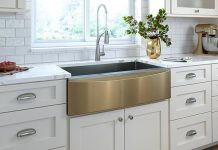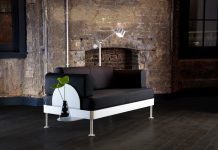
Would it be safe to say that Geoff Warner, founder of Alchemy Architects in St. Paul, owes a lot of one client in particular? Yes.
In 2003, Warner and his team built their first weeHouse on a prairie hilltop overlooking Lake Pepin. “The weeHouse® was a result of a need that a client—Stephanie Arado—had for a retreat that she could afford,” Warner recalls. “Our options were: big pole barn with not much in it, or small jewel box. We went the latter, of course, and fabricated it offsite [in a space inside the firm’s workshop]. Stephanie referred to it as her wee house—and it stuck.”
The rest, as they say, is history.
This year, as Alchemy Architects celebrates its 25th anniversary of not-so-wee success, let us count the ways in which wee has become not only a valid, workable, flexible concept, but also a brand and a business. weeHouses now exist all over the place, from Marfa, Texas, to Canada. The modular system allows for stacking and combining, and the modules can also be assembled into pocket neighborhoods or row houses.
Closer to home, several weeHouses are going on top of a building at 29th and Bryant to provide townhouse-like apartments for the building owner and other renters. A cluster of weeHouses in St. Paul is part of a new development in the Payne-Maryland area. And there have been other iterations.
Rather than a cargo or shipping container as a template, barnHouse draws from the rural vernacular. Alchemy has completed four barnHouse residences: one outside of Corning, New York; one in the Hudson River Valley in Pine Plains, New York; another, a remodel of a 19th-century farmhouse, in Winhall, Vermont; and one in the Seward neighborhood of Minneapolis. And let’s not forget the lightHotel, a luxe, sustainable, compact room for rent on wheels that’s now available via Airbnb.

The secret to Alchemy’s success? “We had an iconic first project that people could understand,” Warner says. “and we tried to develop a system (over the years) that treated the design system as one that people could relate to. Good options, but limited. Powerful customization, but all limited. Real architects working on their real-life needs, making structures for living that are sustainable, beautiful, and by some measures affordable.”
“We’ve learned a lot about what works, and the weeHouse has become a way to deliver high-end design to a lot of different situations,” he adds. “And, in honor of the original intent to do high-end ‘one-design-fits many’ and do it on a bigger scale, we launched the lightHouse this year, too.”
The lightHouse has been prototyped as an ADU (accessory dwelling unit). The low-energy, luxury unit can be placed on a pier or on top of the garage. A porch can also be added to the end or the side. It’s perfect as a small house, cabin, office, studio or age-in-place apartment for the grandparents. We can’t get enough of wee.

By Camille LeFevre



